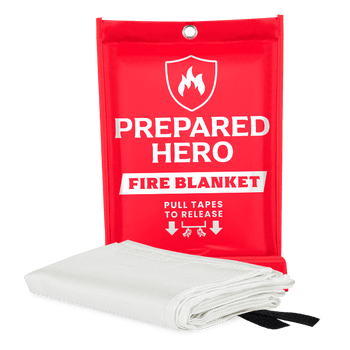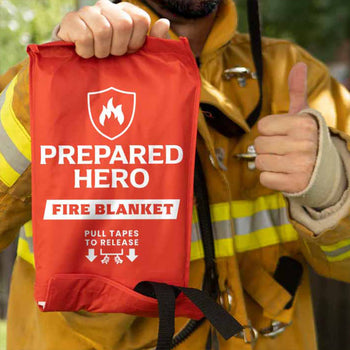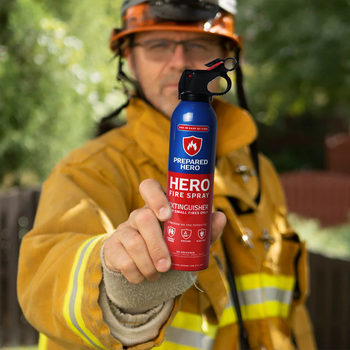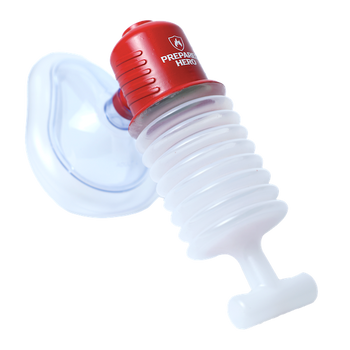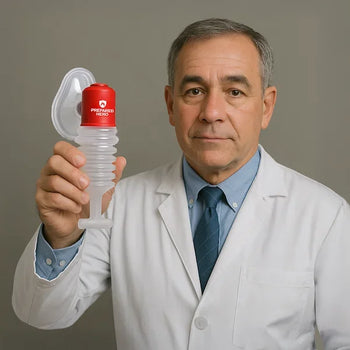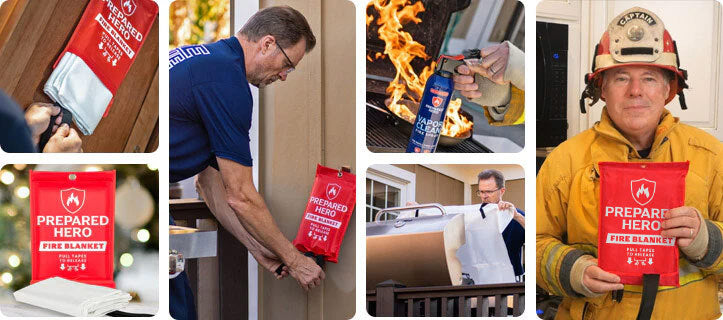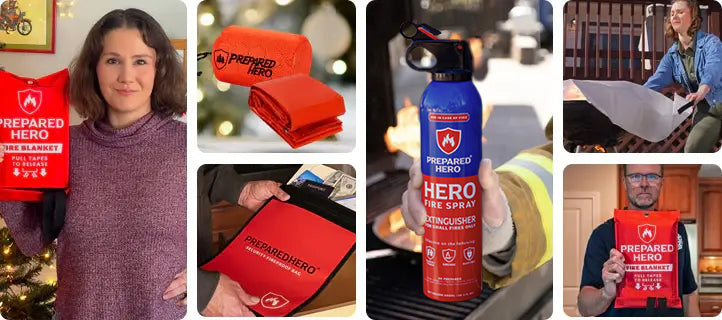Space blankets may look like simple shiny sheets, but they’re useful. First introduced by NASA (National Aeronautics and Space Administration),...
Portable fire extinguishers help you fight small fires at home, work, or in your car. While helpful, grabbing one and charging into a fire isn’t always the smartest move. There are things you should consider before using a portable fire extinguisher. So, what exactly should you take into account prior to fighting any fire with a portable fire extinguisher? Find out below.
1. Is It Safe to Fight the Fire?

First things first: Is it safe to put out the fire?
Not every fire should be handled with a portable extinguisher. If the fire is spreading fast, filling the room with thick smoke, or blocking your exit, get out. Don’t hesitate because a small flame can turn into a major fire in 30 seconds.
If the fire is small (think wastebasket size or smaller) and hasn’t spread, you might be able to put it out with a portable fire extinguisher, fire blanket, or fire spray. But if you feel unsure or panicky, it’s better to leave and call 911. Remember, your safety comes first.
2. Do You Know What’s Burning?
The burning material matters. Different types of fire require different kinds of extinguishers. For instance, Class A fires, which are caused by ordinary combustibles like paper and plastics, need Class A fire extinguishers. These extinguishers are made of water, water mist, wet chemical, powder, or foam.
On the other hand, Class B fires caused by flammable liquids and gases require Class B fire extinguishers that use foam, carbon dioxide, powder, or water mist. Class C or electrical fires need Class C fire extinguishers, while Class D or metal fires need Class D fire extinguishers. Lastly, Class K or grease fires need Class K fire extinguishers made of wet chemicals.
Most home extinguishers are ABC-rated, so they handle the basics. But if you don’t know what’s burning, don’t risk it. Using the wrong extinguisher can make things worse. Water on grease and electrical fires? Huge mistake.
3. Do You Know How to Use It?

Fire extinguishers are easy to use, but you still need to know how to use one correctly. There’s a simple fire extinguisher method called PASS:
- Pull the pin.
- Aim low at the base of the fire.
- Squeeze the handle.
- Sweep side to side.
It sounds easy, but it’s easy to panic or forget the steps. That’s why it helps to practice or at least watch a video demonstration ahead of time. The more familiar you are, the less likely you’ll freeze up.
4. Do You Have a Clear Exit?
Always have a way out. Never block yourself in. Stand with your back toward an exit route while facing the fire if possible. That way, if the flames flare up or your extinguisher doesn’t work, you can escape fast.
If the room starts filling with smoke or the fire doesn’t die down after a few seconds of spraying, don’t hang around. Get out immediately and call the fire department. Remember, your life is more important than trying to save stuff.
5. Is the Extinguisher in Good Shape?

Check a few things before using your extinguisher. Is the gauge in the green? Great. If it’s in the red, it might not work. Is the hose or nozzle clear? There should be no clogs, cracks, or damage.
Is the seal or pin intact? If not, it may have been used or tampered with. How about the pressure? Feel the weight; it should feel full. If anything looks off, don’t use it. Faulty extinguishers can fail when you need them most.
Pro tip: Check your extinguishers monthly. Fire extinguishers must be routinely maintained to make sure they’re ready when needed.
6. How Big Is the Fire?
Portable fire extinguishers are for small fires only. Think:
- A fire is just starting in a trash can
- A small grease fire that hasn’t spread beyond the stove
- A tiny electrical short from a power strip
Once a fire spreads across a room, up the walls, or to furniture, it’s past the point of being extinguished by a portable can. It’s best to leave and call for help.
7. Have You Alerted Others?

Before you try to fight a fire, make sure others know what’s happening. Yell “Fire!” loud enough for people around you to hear. If you’re at home, wake up others and tell them to leave.
Activate the fire alarm if you’re at work or in a public space. Someone should also call 911 as soon as possible, even if you think you’ve got it under control. Follow the RACE acronym if possible. You don’t want to be the only one who knows there’s a fire.
8. Do You Have Enough Time?
Fire can go from manageable to out of control in seconds. You should only attempt to fight it if:
- The fire is small
- It’s not spreading fast
- Smoke isn’t filling the room
- You’re not inhaling toxic fumes
If you try the extinguisher and the fire doesn’t go out within 10 to 15 seconds of spraying, leave. Don’t stick around and hope it eventually works. Fires move fast, and your health can suffer even quicker from smoke inhalation.
9. Are You Physically Able to Use It?

Fire extinguishers can be heavy. Some require two hands, while others need a strong grip to squeeze the handle and keep the nozzle steady.
Ask yourself:
- Can I carry this to the fire safely?
- Can I squeeze and aim without dropping it?
- Can I stay calm and act fast?
If the answer is no, don’t risk it. Inform others, exit safely, and let the professionals handle it.
10. Is the Area Safe?

What’s nearby? Are there gas cans? Propane tanks? A bunch of extension cords or electronics? Fires around volatile stuff can explode or spark even more fires.
You also want to watch for water or slippery floors. Don’t run in, spray, and accidentally slip into flames. Check your footing and surroundings before getting involved.
11. Do You Know What Happens After?
Even if you put the fire out, don’t assume everything’s fine. Call the fire department anyway. Hidden hot spots can reignite. A fire inspector may need to check that everything is really out.
You should also:
- Air out the room if it’s safe
- Watch for signs of smoke damage
- Replace the used extinguisher immediately
If you’re at work or in a commercial setting, there may be forms to fill out or safety inspections to follow.
12. Are You Prepared for Cleanup?

Fire extinguisher residue isn’t always easy to deal with. Some leave behind powder, foam, or other chemicals. These can damage electronics, floors, or furniture. Carbon dioxide fire extinguishers leave no mess, so they’re easier to clean.
After the fire is out and it’s safe:
- Wear gloves and a mask
- Use a vacuum or broom for dry powder
- Wipe down surfaces with soap and water
- Don’t use the area until it is fully cleaned
Again, if you’re not sure the fire is 100% out, let the pros take a look.
Conclusion
Before grabbing a fire extinguisher, take a few seconds to think it through. Is the fire small? Do you know what’s burning? Are you safe, clear-headed, and ready to act? If not, step back and call for help. Portable extinguishers are great tools, but only if used correctly and safely. Your safety always comes first. Know when to fight and when to walk away.
Do you want reliable, easy-to-use, and affordable tools to put out small fires before they spread? Check out Prepared Hero’s fire prevention tools here, and get up to 51% off on certain items. Stay prepared, hero!


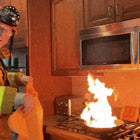 Fire
Fire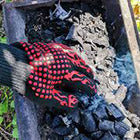 Safety
Safety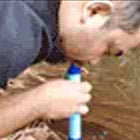 Survival
Survival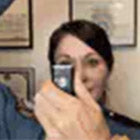 Protection
Protection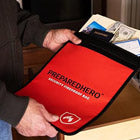 New
New
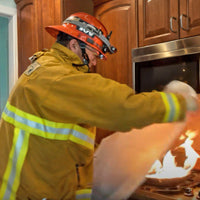 Fire
Fire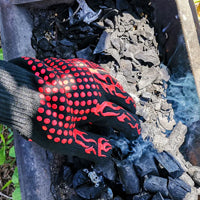 Safety
Safety Survival
Survival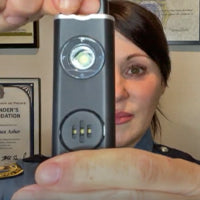 Protection
Protection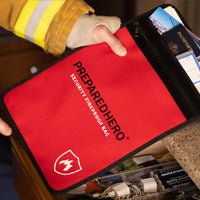 New
New